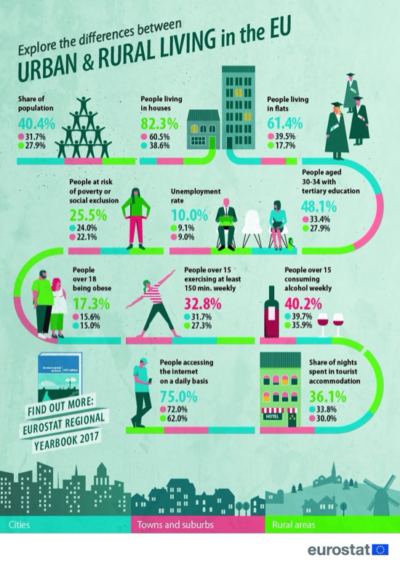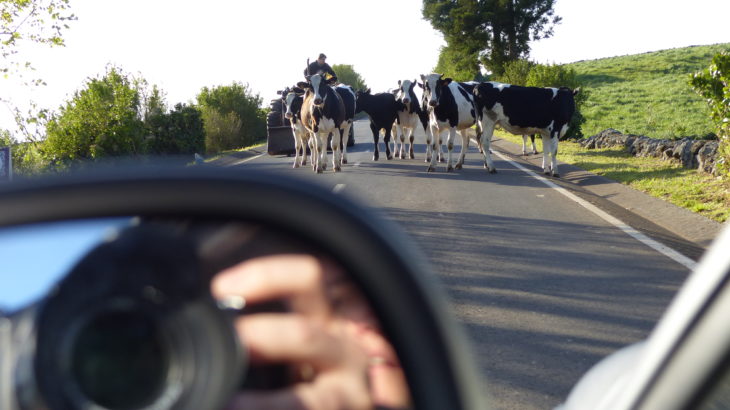Or maybe you should! When was it that T-shirts and hoodies with the “urban style” label became fashionable? Is it only urban things that can be hip or cool? Maybe I prefer “street wear” – after all, villages and little towns still have streets, at least. If you follow the European media on the topics of “countryside and village”, you get a feeling that everything rural is doomed. Rural areas (at least the majority of them) and the people who live there are the losers of the present and possibly of the future, too. Complaints are many: only pensioners live there, hardly any young people, too few people, far away from everything, no privacy, lack of services, internet is slow, … the number of notes on this dusty Wailing Wall is infinite. Who for goodness’ sake wants to keep on living in the countryside under these conditions?
 Certainly, we shouldn’t idealize the countryside. It’s not all like the popular glossy magazines, but all the same nowadays about 30% of Europeans live in rural areas (EUROSTAT, 2017). Probably the vast majority of these people are even very happy to live in their villages and little towns. In view of the congestion in urban areas, more and more city dwellers long for a life close to nature and away from exhaust fumes, consumption, mass events and anonymity. What’s more, the countryside is a fundamental pillar of society, as well as of today’s urban way of life:
Certainly, we shouldn’t idealize the countryside. It’s not all like the popular glossy magazines, but all the same nowadays about 30% of Europeans live in rural areas (EUROSTAT, 2017). Probably the vast majority of these people are even very happy to live in their villages and little towns. In view of the congestion in urban areas, more and more city dwellers long for a life close to nature and away from exhaust fumes, consumption, mass events and anonymity. What’s more, the countryside is a fundamental pillar of society, as well as of today’s urban way of life:
otherwise who would provide important environmental services? And where would they do it? Who would feed us all? Where would important raw materials come from? Where would we go to rest and relax? Where do we as a “species” come from (and many of our traditions and customs)?
These relationships are not always clear to us in everyday life. But let’s not fool ourselves: it would be a serious mistake to downplay the challenges and problems in rural areas through some kind of misinterpreted “rural activism”. These problems are enormous and closely related to our global economic order and our barbaric zeal for never-ending growth. In any case, my view is that in this matter, as in many others, we need to reorientate ourselves, shift our perspective from problems to solutions, from shortcomings to potentials. We need to spend a lot more time talking about “what can be done” rather than “we can’t do that either“. We don’t have to reinvent the wheel, we can often take some tips from the “pros” and copy good projects and ideas. But we are also called upon to be active and creative. Dynamism and vibrancy must be brought into the villages to tackle the challenges. How this works and why there are villages and communities that are very successful despite their difficult environment is the subject of my doctorate. I have started this blog to document my experiences in three successful European villages.
In this blog, I do not just want to share my experiences in the villages with you, but also invite you to join the discussion. Do you know of an exciting project? What are you doing to encourage change in your locality and what challenges are you encountering? What is the situation like with similar matters in other corners of the European Union? What experience have you gained in research and practice?
Write to me, participate, and let us together with other dedicated people create this vision for rural areas.
